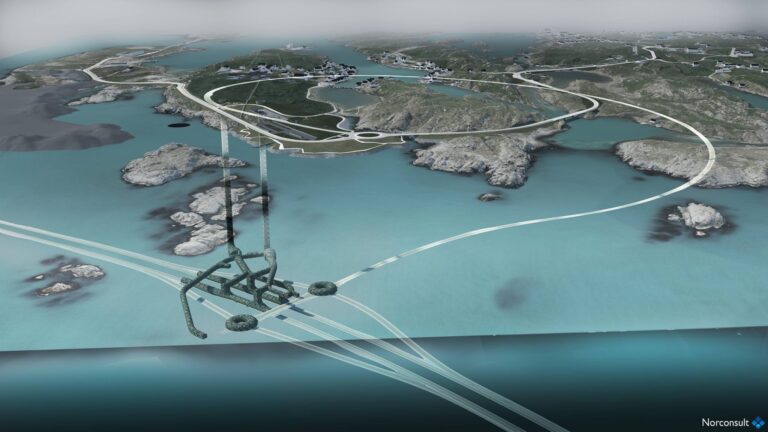Norway has long been known for its dramatic landscapes and rugged coastlines. Now, one of Europe’s most ambitious infrastructure projects is taking shape beneath those iconic waterways.
The Rogfast tunnel, currently under construction in western Norway, will become both the world’s longest and deepest subsea road tunnel once complete.

Stretching 26.7 kilometres and reaching a depth of 390 metres below sea level, Rogfast—short for Rogaland fixed link—is poised to transform transport in this part of the country.
When finished, the project will provide a direct, ferry-free road connection between the cities of Stavanger and Bergen, cutting travel time by up to 40 minutes.
A Key Link on Norway’s West Coast
Rogfast forms part of the E39 highway, a vital transport corridor that runs along Norway’s west coast, connecting key cities including Kristiansand, Stavanger, Haugesund and Bergen.
This region is characterised by fjords and islands, which have traditionally made overland travel complex, requiring numerous ferry crossings.
By removing one of the longest and most time-consuming of these ferry links, Rogfast will create a more seamless journey for freight, commuters, and tourists alike.
The project is expected to support economic development, reduce transport costs for industry—particularly seafood producers—and improve accessibility across the region.
According to Norway’s roads authority, as many as 13,000 vehicles a day are expected to use the tunnel by 2053. It's the first major project within Norway's ferry-free programme for the E39 highway.
An Engineering Feat Beneath the Sea
Unlike similar-scale projects elsewhere in Europe, Rogfast is being drilled and blasted through solid bedrock rather than built using prefabricated tunnel elements.
This method, although challenging, is one Norway has refined through decades of tunnel construction experience. The country already has around 40 subsea road tunnels, giving it world-leading expertise in this niche field.
Project manager Oddvar Kaarmo from the Norwegian Public Roads Administration explained the approach: “You are travelling through solid rock… our regulations demand 50 metres of rock between the tunnel and the sea above. That gives us durability and resilience under water pressure.”
The tunnel will consist of two tubes—one for each direction of traffic—with safety walkways and emergency access points allowing evacuation from one tube to the other in case of incidents like fire.
The entire project is expected to cost around 25 billion Norwegian kroner (approximately €2.2 billion).
A Roundabout 260 Metres Under the Sea
One of the most remarkable design elements is the tunnel’s connection to Kvitsøy, Norway’s smallest municipality.
The tunnel will include a spur to the island, reached via two roundabouts located 260 metres beneath sea level—believed to be the first time this kind of tunnel junction has been built in such a way.
The roundabouts will allow traffic to continue flowing even during maintenance or emergency closures in one of the main tunnels. “We can still run the tunnel by using one pipeline and traffic in each direction in one pipeline,” said Kaarmo.
Delays, Cost Increases and Revised Plans
Rogfast has not been without its challenges. Originally approved in 2017, the project faced cost overruns and bidding issues that forced a pause in 2019.
A full review led to a new plan and increased government funding. The overall budget rose by around NOK 8 billion. Construction resumed from 2021, with contracts signed between 2022 and 2024 for the tunnel’s north, south and central sections.
As of late 2023, significant progress had been made, with blasting and excavation well underway at multiple points along the route. Despite the rocky start, the project is now on track for completion in 2033.
A Boost for Tourism, Industry and Daily Life
Once open, Rogfast is expected to have a major impact on both local and national levels. Commuters in the Stavanger and Haugesund areas will see shorter journey times, and freight operators will benefit from more predictable delivery routes.
Tourism could also see a boost. Bergen, already one of Norway’s most visited cities, will become more accessible by road from the south. This could open up new road trip itineraries for tourists exploring the fjord region.
Kaarmo believes the new infrastructure could encourage more visitors to explore other parts of the west coast as well: “Most likely, the tourists will also get eyes for this part of Norway even more than today.”
When Will Rogfast Open?
If all goes to plan, the tunnel will open to traffic in summer 2033. Once completed, Rogfast will be not only a vital piece of transport infrastructure, but a showcase of Norwegian engineering and ingenuity beneath the Norwegian fjords region.

